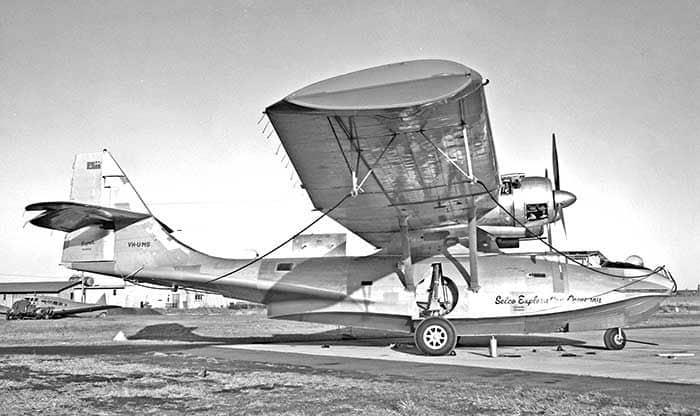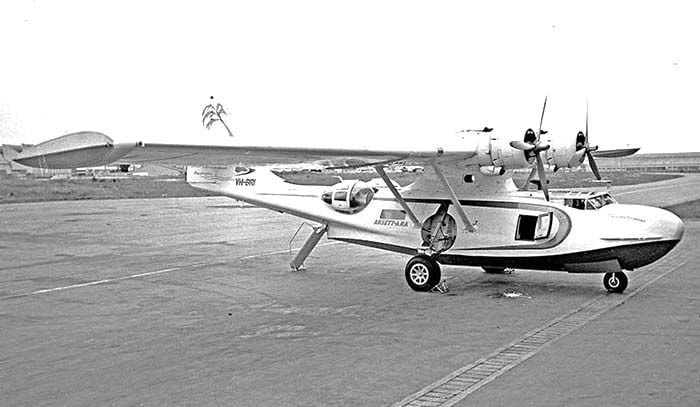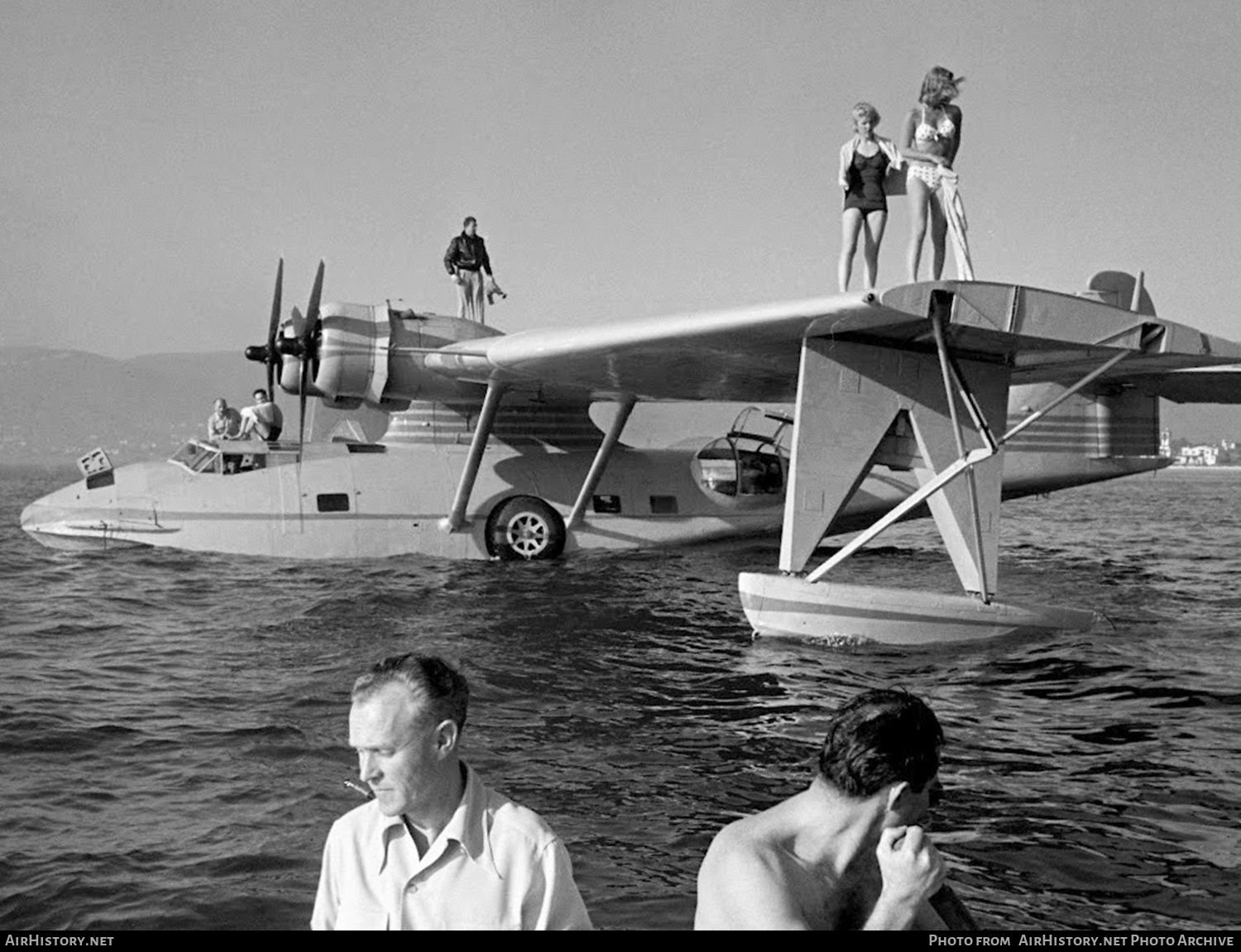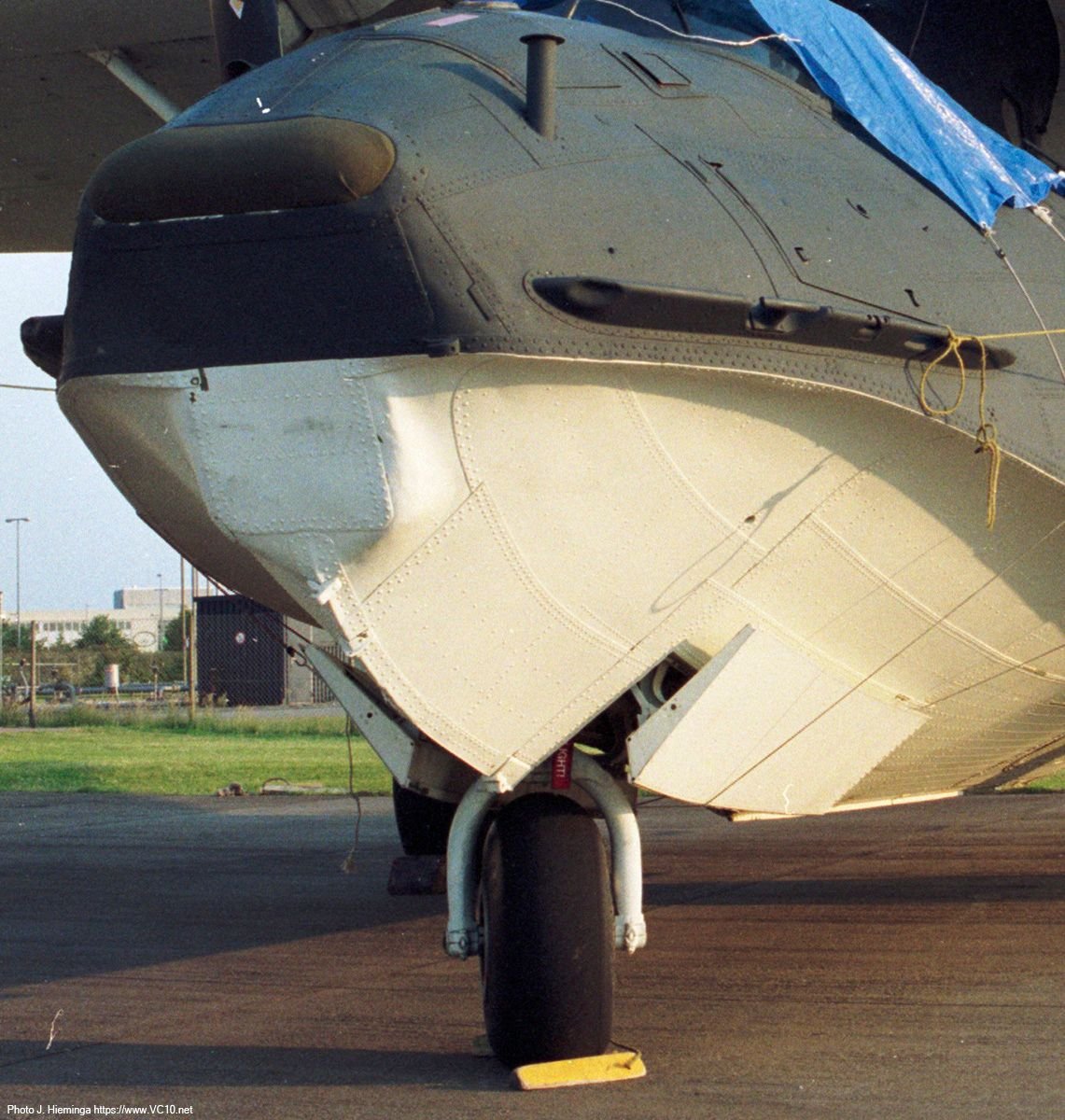Canso equipped with full clipper bow?
Transparency International
Thread Starter
I was reading the accident report of the PBY-5A Canso CF-IHA which was totalled during landing in Nuuk, Greenland, harbour in 1962.
The author found it relevant to state that it was the captains "... firstglassy calm water landing with a Canso equipped with full clipper bow".
Google has not been cooperative in determining what a "full clipper bow" on a Canso is and/or how it would affect the landing.
Any suggestions ?
The author found it relevant to state that it was the captains "... firstglassy calm water landing with a Canso equipped with full clipper bow".
Google has not been cooperative in determining what a "full clipper bow" on a Canso is and/or how it would affect the landing.
Any suggestions ?
If I understand correctly the clipper bow has a wider flare out of the V-shape bow. This could change the perceived height above the water. Especially if the water is glass calm because you have less references.
I found something here on bowshapes.
I found something here on bowshapes.
The aircraft in the photo has a clipper bow, I get the impression from reading that a clipper bow means the turret has been removed and the resulting "hole" has been faired over. One statement found,

The awkward nose turret. You can appreciate the different sight lines a pilot would have in the two versions.

One thing that civil PBY conversions accomplished was a necessary bit of beautification: what came to be known as the “clipper bow,” a fairing-in of the cowl ahead of the windscreen to eliminate the awkward nose turret. If there was one discordant note in the Cat’s refrain, it was that squared-off little greenhouse that gave the airplane the look of an angry hognose snake, a protuberance that seemed an add-on and if anything harked back to World War I observation airplanes with a freezing Frenchman standing upright in the bow. On early PBYs, in fact, the “turret” was indeed nothing more than a semi-open bombardier/observer’s post. Guns came later—ineffective single or twin .30s in the nose, single .50s in each waist blister and sometimes a .30-cal firing from a belly hatch near the tail.

The awkward nose turret. You can appreciate the different sight lines a pilot would have in the two versions.

There have been several options to get a Catalina airframe certified on the civil market, the WIX thread linked to above specifies some of them but unfortunately most of the images have been lost. In the early days, fairing over the remains of the nose turret was one option, eventually a modification emerged as 'popular' and that one (with some variations) is seen in various photos, one of which features the Dutch Cat shown above.
Right now (AFAIK) the FAA will only allow a Cat to fly off water with a faired in bow, as the original turret incurs the risk of water ingress. The accident with the Super Cat in Southampton showed the sad effects of that (although that one was caused by a nose gear door coming off).
Going back to the original question, the sight picture from the cockpit will be different between a turret equipped Canso and one that has the faired in bow. Can you share the accident report here? I am curious to see how it played a role in the accident.
The TCDS states:
and:
Concluding, there are two different bow variants mentioned in the first note, and the second quote may point to a third option.
Right now (AFAIK) the FAA will only allow a Cat to fly off water with a faired in bow, as the original turret incurs the risk of water ingress. The accident with the Super Cat in Southampton showed the sad effects of that (although that one was caused by a nose gear door coming off).
Going back to the original question, the sight picture from the cockpit will be different between a turret equipped Canso and one that has the faired in bow. Can you share the accident report here? I am curious to see how it played a role in the accident.
The TCDS states:
(2) To be eligible for maximum weight of 28,000 lbs., a clipper bow in accordance with CVAC Drawing
No. 28B15001 B and pertinent detail drawings must be installed. The airplane is eligible for a
maximum weight of only 27,000 lbs. with the original PBY-5A nose and turret installed, provided the
turret revolving mechanism is removed or made inoperative and the opening between the nose and turret
are faired over.
No. 28B15001 B and pertinent detail drawings must be installed. The airplane is eligible for a
maximum weight of only 27,000 lbs. with the original PBY-5A nose and turret installed, provided the
turret revolving mechanism is removed or made inoperative and the opening between the nose and turret
are faired over.
NOTE 9. Model 28-5ACF is approved with retention of waist blisters and a modified clipper bow at a maximum take-off and
landing weight of 27,880 lbs. when modified per So. California Aircraft Corp., Ontario, CA., Form ACA-337,
dated 12/27/48. Airplane Flight Manual must be revised in accordance with approved manual for aircraft N69043
owned by the So. California Aircraft Corp., Ontario, CA. When such blisters are retained, the fixed elevator trim
tab, described in CVAC Drawing 28T15024, must not be incorporated.
landing weight of 27,880 lbs. when modified per So. California Aircraft Corp., Ontario, CA., Form ACA-337,
dated 12/27/48. Airplane Flight Manual must be revised in accordance with approved manual for aircraft N69043
owned by the So. California Aircraft Corp., Ontario, CA. When such blisters are retained, the fixed elevator trim
tab, described in CVAC Drawing 28T15024, must not be incorporated.
Transparency International
Thread Starter
Gents, thanks a lot! It is nice to know that the PBYs are not forgotten.
Bureau of Aircraft Accidents Archives:
Eastern Provincial Airways, Catalina, CF-IHA, accident ...
Bureau of Aircraft Accidents Archives:
Eastern Provincial Airways, Catalina, CF-IHA, accident ...
Last edited by dusk2dawn; 4th Apr 2024 at 18:04. Reason: Add link.
A couple of different faired noses. The first is VH-UMS which was powered by more powerfull 1,700hp Wright R-2600 engines, guess to overcome the drag imposed by the antenna array, used for survey.


This is N69043 mentioned in J's post #4 with a clipper bow.



This is N69043 mentioned in J's post #4 with a clipper bow.

The following users liked this post:
Interesting report! It specifically mentions "a Catalina PBY-5A which had been converted to a model TC-785". That is not a correct model number, but a reference to the TCDS which is the exact same one I looked up yesterday. The later mention of a Max permissible landing weight of 28,000 lbs is another clue that this Cat had been converted to the configuration mentioned in the first quote in my previous post "in accordance with CVAC Drawing No. 28B15001 B and pertinent detail drawings". (You can find this TCDS here by looking up the TC 785 number: https://drs.faa.gov/browse/TCDSMODEL/doctypeDetails).
The accident itself is very reminiscent of what happened to the Super Cat in Southampton in 1998: https://aviation-safety.net/asndb/323941 and https://www.gov.uk/aaib-reports/28-5...s-27-july-1998
That particular Super Cat (R-2600 engines, larger rudder and such) also had a full clipper bow judging from the photos. The first photo megan posted also shows a Super Cat conversion but without that high bow shape. I get the impression that a Cat front end on which the bomber's window, or the shape thereof (see photo below), is still present would be a regular faired bow, while the full clipper bow as mentioned in the report does away with that flat bit and has a higher nose shape above it. That's my interpretation though.

The accident itself is very reminiscent of what happened to the Super Cat in Southampton in 1998: https://aviation-safety.net/asndb/323941 and https://www.gov.uk/aaib-reports/28-5...s-27-july-1998
That particular Super Cat (R-2600 engines, larger rudder and such) also had a full clipper bow judging from the photos. The first photo megan posted also shows a Super Cat conversion but without that high bow shape. I get the impression that a Cat front end on which the bomber's window, or the shape thereof (see photo below), is still present would be a regular faired bow, while the full clipper bow as mentioned in the report does away with that flat bit and has a higher nose shape above it. That's my interpretation though.

The following users liked this post:




